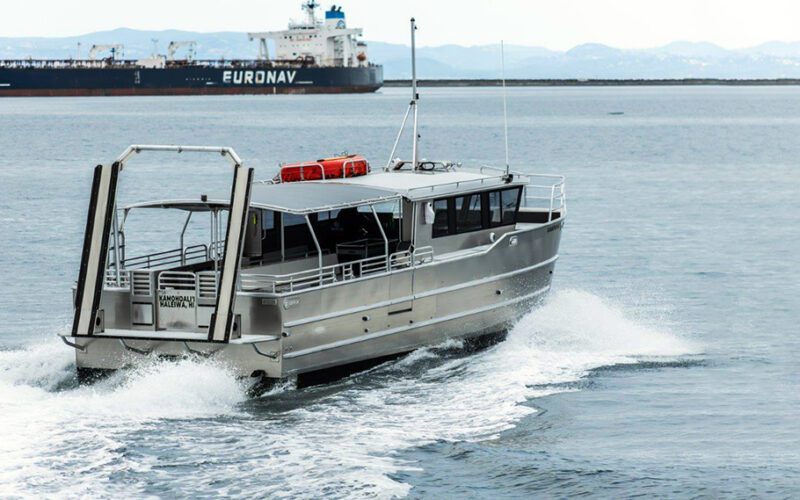BRIX Marine continues to flex in the Hawaii shark tourism space. Washington-based BRIX Marine has delivered the newly built aluminum Classic Tunnel Catamaran (CTC) Kamohoali’i for client Haleiwa Shark Tours of Oahu, Hawaii. The 40-foot length, 14-foot beam vessel dubbed a 4014-CTC is the latest of the BRIX Marine family of Hawaiian shark tour boats. The new 20,560-pound tour boat, which is named after the Hawaiian shark god, is U.S. Coast Guard Subchapter T small passenger vessel certified. “Kamohoali’i is a testament to BRIX Marine’s commitment to pushing the boundaries of marine innovation,” BRIX Marine Managing Director Perry Knudson said.…
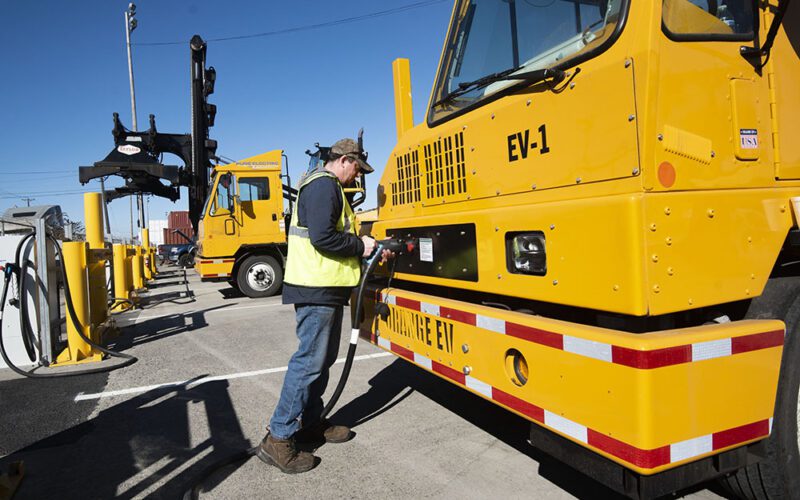
When it comes to cargo handling equipment, sustainability is the apparent path forward for West Coast seaports, both in terms of environmental innovation and funding. From yard tractors and rubber-tired gantry cranes to ship-to-shore and roll-on/roll-off cranes, the next generation of equipment arriving at West Coast marine terminals is capable of operating on electric charging and/or alternative fuel sources. But funding such innovation will be key to how well terminals move forward on cargo-handling equipment. That’s why port officials have been particularly bullish in going after that funding at the state and federal level to leverage private sector investment. “There…
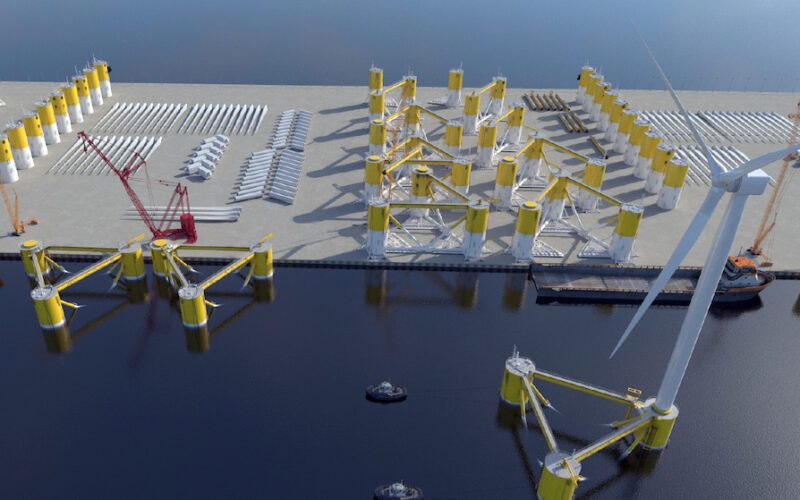
Without a concerted effort to change the trajectory of offshore wind port investment, the U.S. is likely to fall short of both its short term goal of creating 30 GW of new renewable energy by 2030 and long-term goal of 110 GW by 2050. This is according to Darren McQuillan, vice president of global business development with Bardex Corp., a Northern California company that designs, builds and supports engineering systems and propriety products for the marine industry. His comments were made during one of the sessions held during the Floating OSW (Offshore Wind) Port & Vessel Summit that took place…
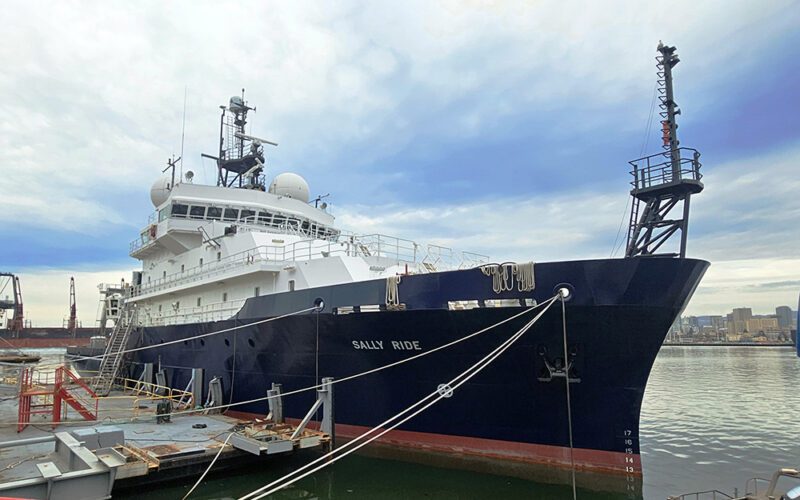
Yard infrastructure projects, facility upgrades and work on notable vessels have kept West Coast shipyards busy over the past year as they take on major jobs and expand operations. Some have purchased new cranes and expanded drydocks, others completed maintenance and repowers on historic boats and a few handled unique projects. Pacific Maritime reached out to yards to find out the latest news, notable jobs and yard improvement projects. Bay Ship and Yacht Co. The big news out of Alameda, Calif.-based Bay Ship and Yacht Co. is the change to employee ownership though an Employee Stock Ownership Plan (ESOP), Bay…
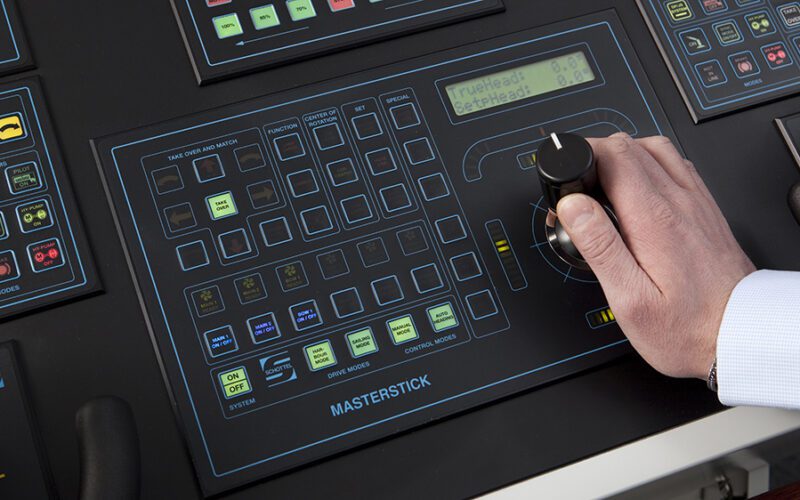
It’s common to think “green” when discussing new technologies, including in the marine fuel and propulsion arena. And based on discussions with developers of marine propulsion systems, the green movement is coming – it’s just not quite there yet, and the technology won’t replace standard diesel engines anytime soon. Dave Hughes, a U.S. marine sales manager for Scania, the large Swedish manufacturer, is excited about new green technologies. However, he told Pacific Maritime, he believes diesel power and other traditional propulsion systems will still be in operation and in demand for some time. “There’s been a lot of research and…
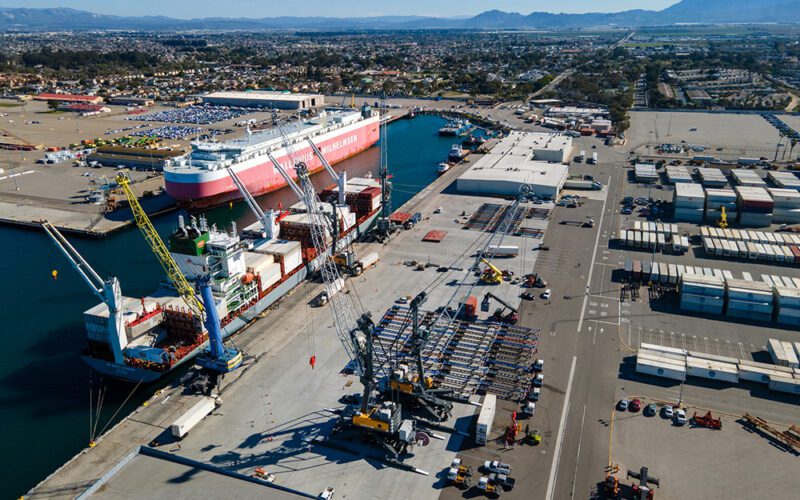
Data show that in 2023, maritime cargo numbers at most California ports started to stabilize to pre-pandemic levels, and officials have zeroed in on key priorities. Last year, the state’s ports were awarded millions in grant funding for projects focused on infrastructure, the supply chain and environmental goals. Ports kicked off projects, installed equipment and implemented new public programs. For some, cargo volume numbers grew and they prepared to compete for more business. This year is set to continue that momentum as seaports all along the Golden State’s coastline have ambitious plans already in place. Pacific Maritime reached out to…
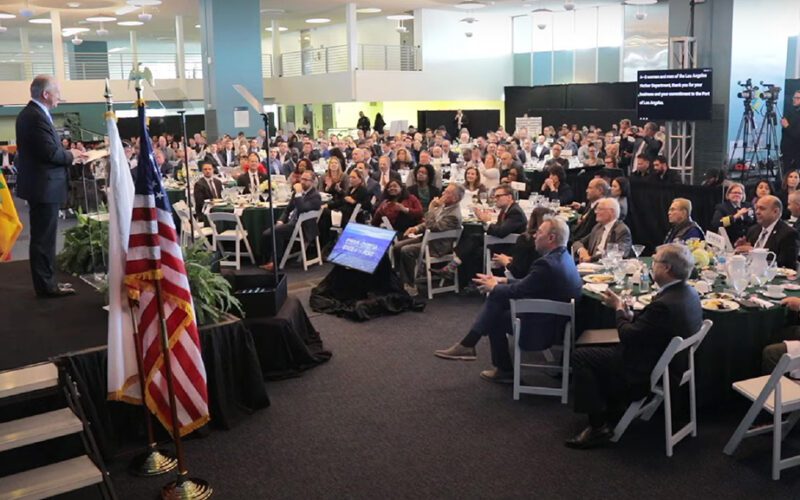
During their annual “State of the Port” speeches in January, the heads of the adjoining Los Angeles and Long Beach seaports outlined their goals and priorities, which include increasing market share, cleaning the environment and developing wind energy. Port of Los Angeles Executive Director Gene Seroka gave his ninth annual “State of the Port” address on Jan. 10 at the POLA’s World Cruise Center terminal. The speech took place as part of a luncheon attended by about 550 community, business and labor stakeholders. The event was sponsored by the Pacific Merchant Shipping Association. During his nearly 40-minute speech and presentation,…
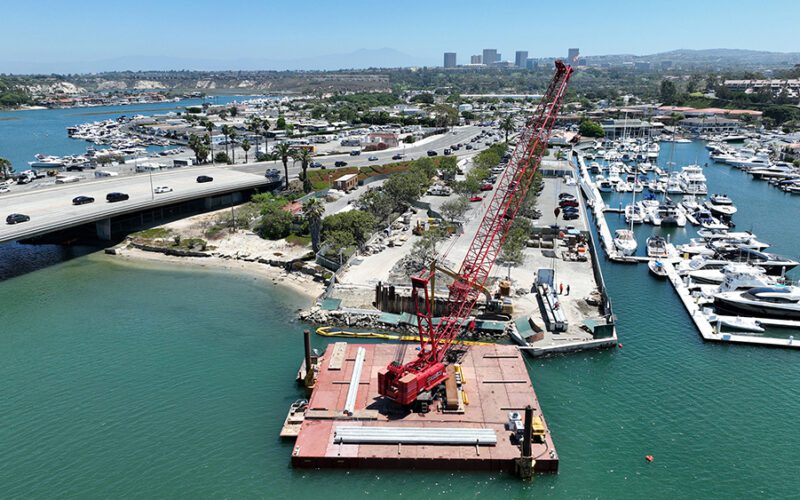
Whether it’s expanding marinas in Southern California or shoring up the structural integrity of dock structures, West Coast maritime heavy civic engineering and construction companies have been playing a major role in keeping essential marine structures active and growing. And while many of the projects are specific to the West Coast, these firms are also extending their reach to other parts of the U.S. and overseas. Here is a look at some ongoing and planned maritime construction projects being performed by West Coast-based companies. Power Engineering Construction Northern California-based Power Engineering, a major West Coast civil and marine engineering construction…
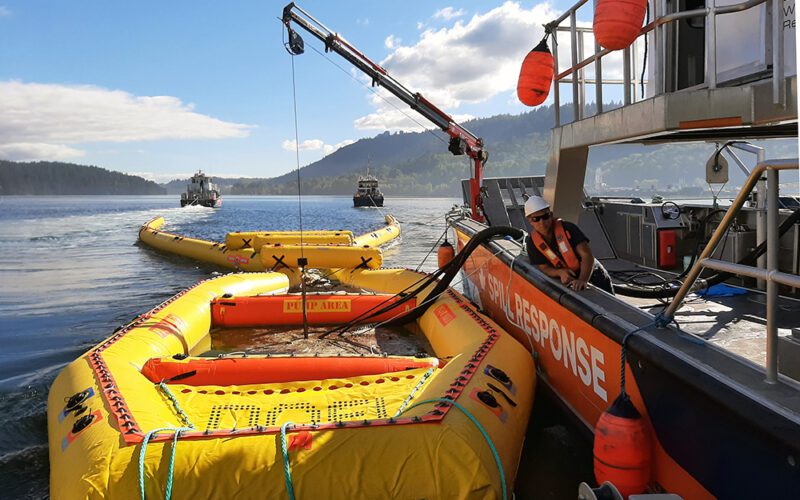
From difficult weather conditions to the state of a location in the aftermath of a disaster, a number of factors come into play when an oil spill occurs. And while many of them are out of one’s control, experts in this field know that one of the factors they can control is the ability to quickly respond to a spill. “The faster you can get there, the quicker you can contain it and the more likely you can mitigate the impact of the damage of that spill,” said Michael Lowry, a spokesman for Western Canada Marine Response Corp., an organization…
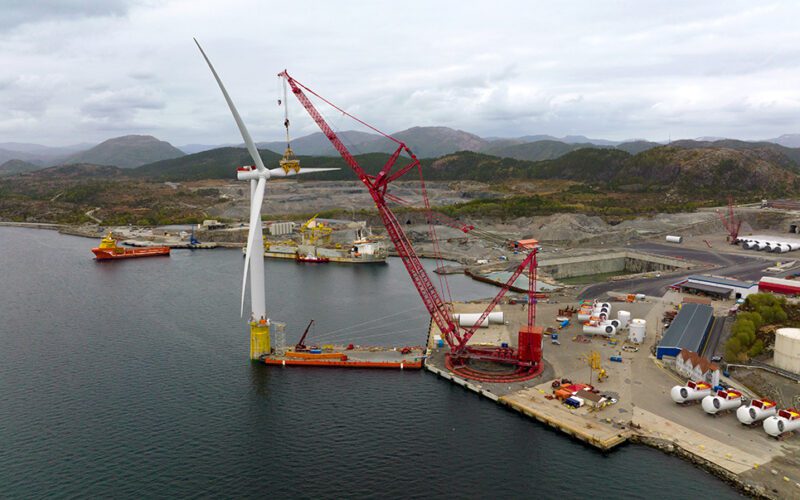
Although offshore wind projects are common along the East Coast, the West Coast has yet to see any turbines dot the horizon. However, that’s expected to change in the coming years, as the waters have opened up in California (and are on their way in Oregon and Washington). Plans for floating systems are in the works, as well as land-side supporting facilities. In 2021, several federal departments announced a shared goal to deploy 30 gigawatts (GW) of offshore wind energy in the U.S. by 2030. In 2022, President Biden followed that up with an additional objective: 15 GW of floating…

